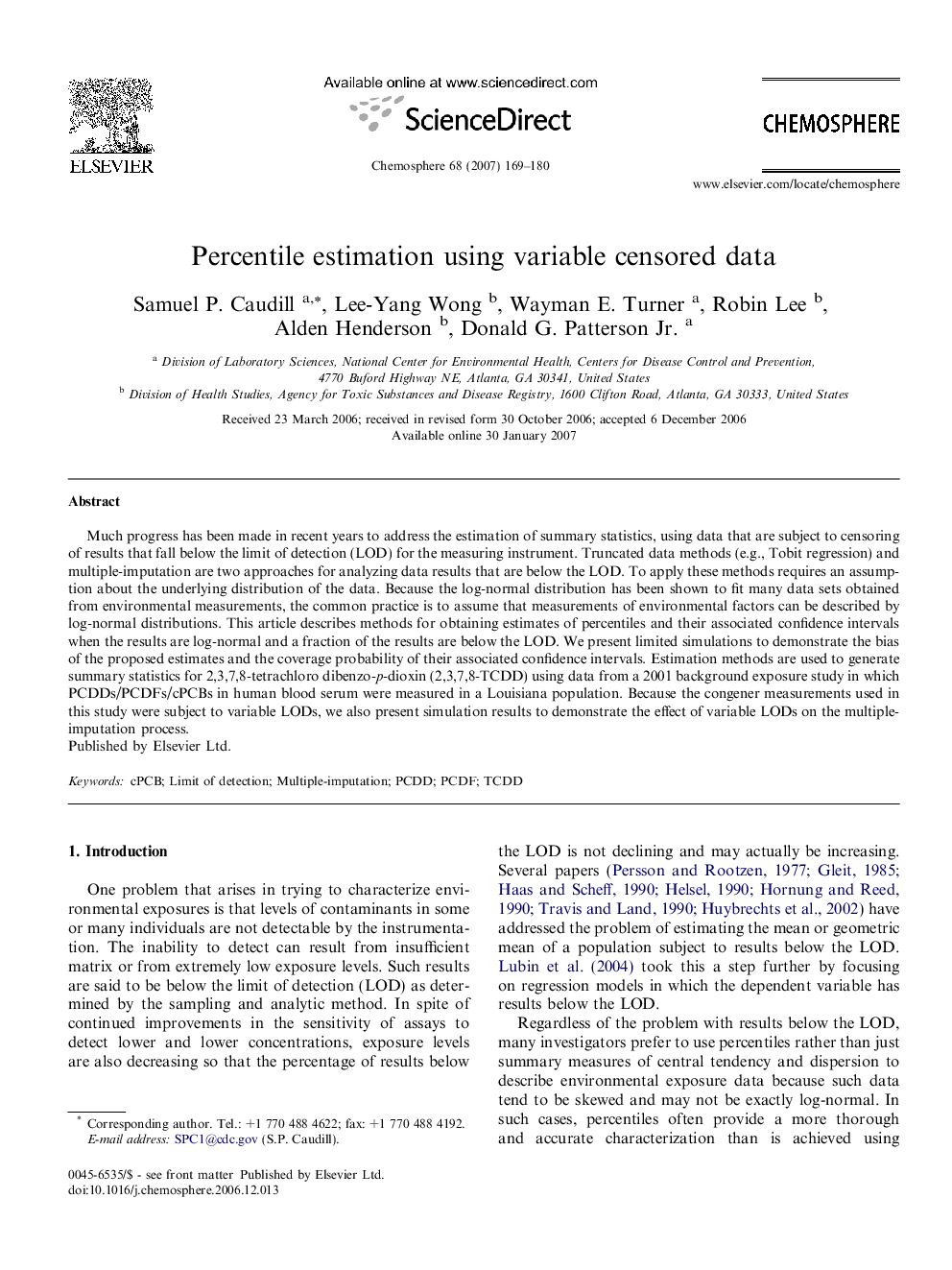| Article ID | Journal | Published Year | Pages | File Type |
|---|---|---|---|---|
| 4414824 | Chemosphere | 2007 | 12 Pages |
Much progress has been made in recent years to address the estimation of summary statistics, using data that are subject to censoring of results that fall below the limit of detection (LOD) for the measuring instrument. Truncated data methods (e.g., Tobit regression) and multiple-imputation are two approaches for analyzing data results that are below the LOD. To apply these methods requires an assumption about the underlying distribution of the data. Because the log-normal distribution has been shown to fit many data sets obtained from environmental measurements, the common practice is to assume that measurements of environmental factors can be described by log-normal distributions. This article describes methods for obtaining estimates of percentiles and their associated confidence intervals when the results are log-normal and a fraction of the results are below the LOD. We present limited simulations to demonstrate the bias of the proposed estimates and the coverage probability of their associated confidence intervals. Estimation methods are used to generate summary statistics for 2,3,7,8-tetrachloro dibenzo-p-dioxin (2,3,7,8-TCDD) using data from a 2001 background exposure study in which PCDDs/PCDFs/cPCBs in human blood serum were measured in a Louisiana population. Because the congener measurements used in this study were subject to variable LODs, we also present simulation results to demonstrate the effect of variable LODs on the multiple-imputation process.
